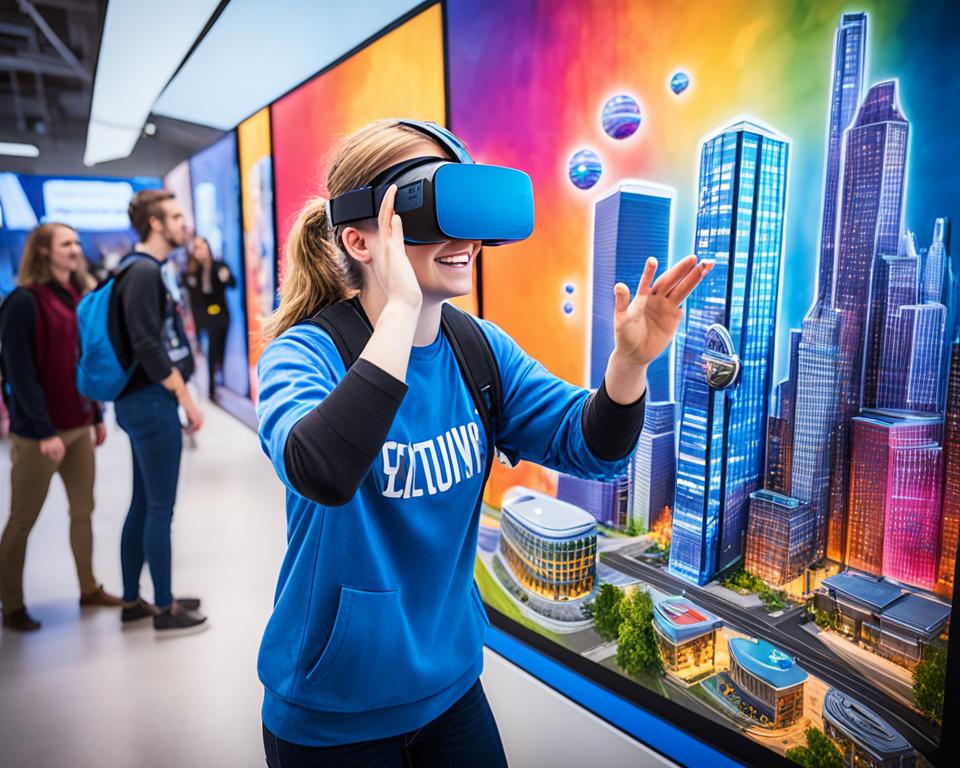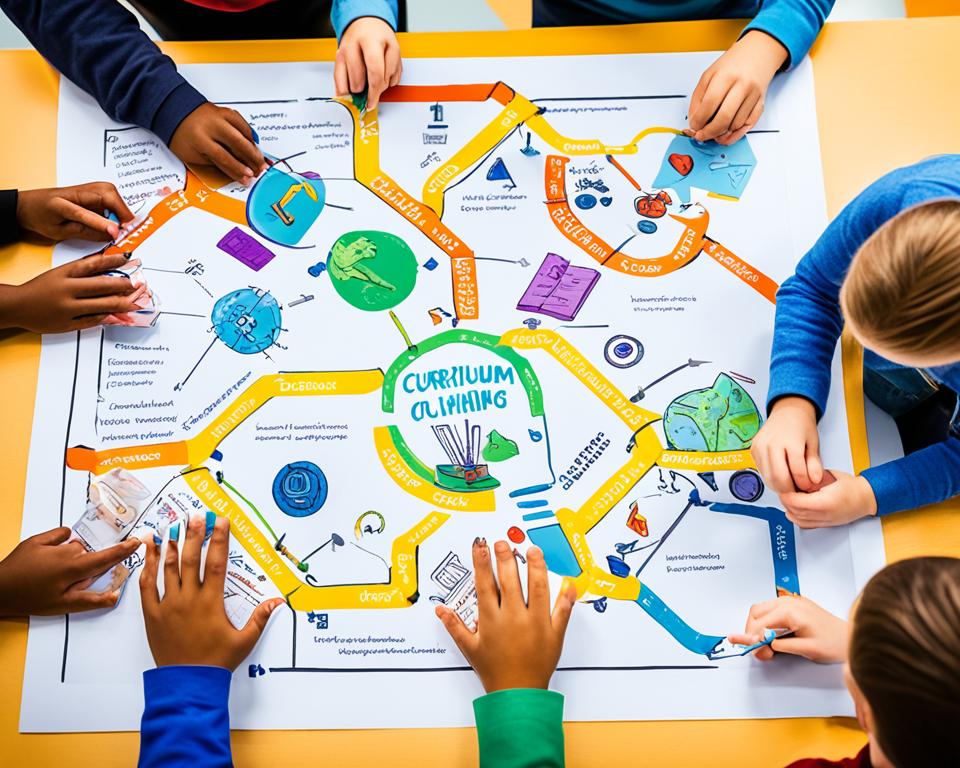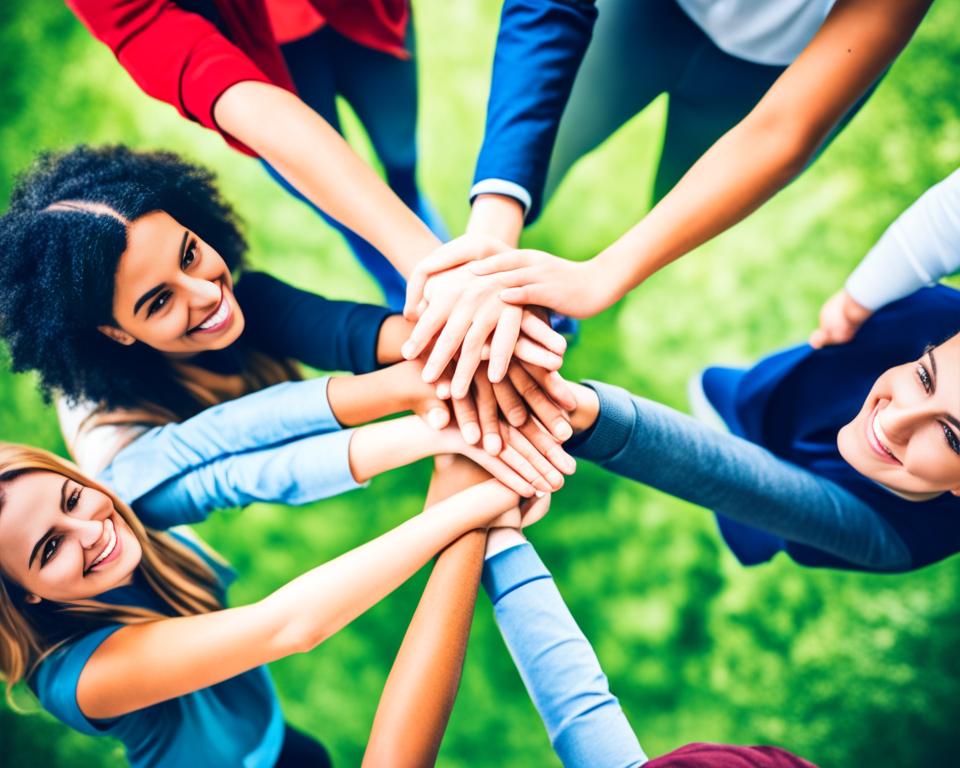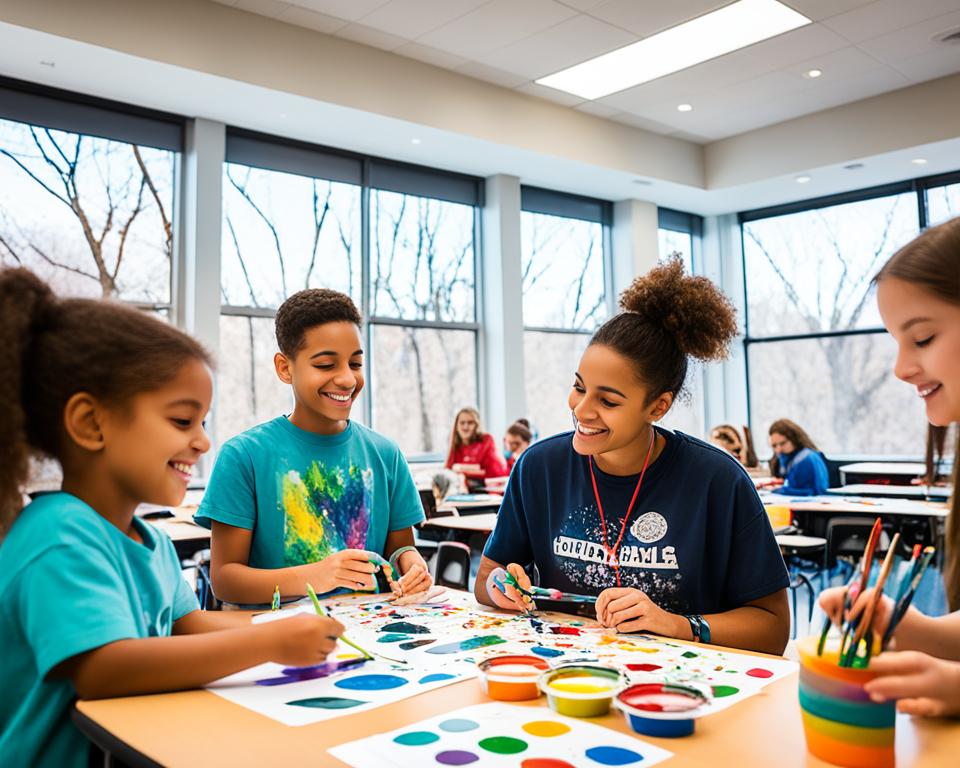Education is a powerful tool that has the potential to transform individuals and society as a whole. Creative education programs, in particular, harness this transformative power and have a profound impact on personal growth and societal development. These programs go beyond traditional teaching methods to nurture creativity, critical thinking, and problem-solving skills, empowering individuals to explore their true potential and navigate a rapidly changing world.
Through creative education programs, students are provided with a dynamic and engaging learning experience that sparks their imagination and fosters a love for learning. These programs prioritize holistic development, encompassing not only academic knowledge but also social and emotional skills. By embracing innovative learning strategies, such as project-based learning, personalized instruction, and interactive curriculum, creative education programs create a supportive environment that values individual strengths, encourages collaboration, and promotes lifelong learning.
Furthermore, creative education programs play a pivotal role in societal development. By equipping individuals with the skills and mindset to think critically, adapt to new challenges, and embrace diversity, these programs foster inclusive communities and contribute to the advancement of society. Creative education programs nurture future leaders, innovators, and change-makers who are equipped to tackle complex global issues and drive positive change.
In an era where creativity and adaptability are highly valued, creative education programs provide a world of possibilities for personal growth and societal progress. These programs transform education from a mere means of acquiring knowledge into a catalyst for lifelong learning, development, and the pursuit of a sustainable future.
Key Takeaways:
- Creative education programs have the power to transform individuals and society.
- These programs nurture creativity, critical thinking, and problem-solving skills.
- They prioritize holistic development and provide a dynamic learning experience.
- Creative education programs contribute to societal progress and foster inclusive communities.
- They prepare individuals to tackle complex global issues and drive positive change.
The Essence of Creative Education Programs in Modern Learning
Creative education programs are revolutionizing modern learning by embracing innovative approaches that foster creativity and provide alternative solutions to traditional education.
The Role of Artistic Expression in Fostering Creativity
Artistic expression plays a crucial role in creative education programs, providing students with a platform to think outside the box, explore their imaginations, and develop their unique creative abilities. Through art, music, theater, and other creative mediums, students are encouraged to express themselves, communicate their ideas, and challenge conventional thinking.
Artistic expression not only enhances individual creativity but also nurtures critical thinking skills, problem-solving abilities, and emotional intelligence. It allows students to approach learning from a different perspective, fostering innovation and cultivating a deep appreciation for the arts.
By incorporating artistic expression into the curriculum, creative education programs inspire students to embrace their creativity, embrace diversity and collaboration, and develop a lifelong love for the arts.
Innovative Learning Solutions: Rewriting the Script of Traditional Education
Creative education programs go beyond the boundaries of traditional education, rewriting the script with innovative learning solutions that better cater to the needs and interests of students. These programs prioritize personalized learning, encouraging students to take an active role in their education and pursue topics and projects that resonate with their passions.
Instead of relying solely on lectures and textbooks, innovative learning solutions incorporate hands-on activities, real-world applications, and technology-driven experiences. These methods engage students on a deeper level, igniting their curiosity and empowering them to explore and discover knowledge independently. By providing experiential and project-based learning opportunities, these programs foster critical thinking, problem-solving, and collaboration skills.
Innovative learning solutions also recognize the importance of incorporating technology into education. By seamlessly integrating technology tools and resources, creative education programs create a dynamic and interactive learning environment that prepares students for the digital age.
With their emphasis on artistic expression, fostering creativity, and offering innovative learning solutions, creative education programs are shaping the future of education, providing students with the skills and mindset necessary to thrive in a rapidly changing world.
Unveiling the Potential Through Innovative Learning Experiences
Innovative learning experiences have the power to unveil the true potential of students. By moving away from traditional classroom settings and embracing personalized, project-based learning, students are given the opportunity to engage with material in a more meaningful and immersive way. This allows them to develop critical thinking skills, problem-solving abilities, and a deeper understanding of the subject matter. Through innovative learning experiences, students can discover their passions and unlock their full potential.

Traditional education often follows a one-size-fits-all approach, where students are expected to fit into pre-determined molds. However, innovative learning experiences take a different approach. By personalizing the learning journey, students can explore their unique interests and learning styles. They have the freedom to pursue projects and topics that resonate with their passions, fostering a sense of ownership and motivation in their education.
Project-based learning is a valuable component of innovative learning experiences. Rather than simply memorizing facts and figures, students engage in hands-on projects that require critical thinking, collaboration, and problem-solving skills. This approach not only helps them understand concepts more deeply but also prepares them for real-world challenges.
“Innovative learning experiences allow students to take control of their own learning and explore topics that interest and inspire them.”
Innovative learning also encourages creativity and innovation. By providing students with opportunities to think outside the box and approach problems from different angles, they develop their creative thinking and problem-solving abilities. This prepares them to adapt to the rapidly changing demands of the future workforce.
Moreover, innovative learning experiences foster a deeper connection between students and their education. By making learning more relevant and applicable to their lives, students are motivated to actively participate and take ownership of their learning journey. This increased engagement leads to a more enriching experience and greater retention of knowledge.
In conclusion, innovative learning experiences have the potential to transform education and unleash the untapped potential of students. By personalizing learning, incorporating project-based activities, and fostering creativity, students can develop the skills they need to succeed in a rapidly evolving world. Through these experiences, students not only acquire knowledge but also gain the confidence and agency to pursue their passions and make a positive impact on the world.
Nurturing 21st-Century Skills with Hands-On Educational Experiences
Hands-on educational experiences are essential in nurturing the 21st-century skills that students need to thrive in today’s rapidly evolving world. These experiences go beyond traditional textbook learning and provide students with real-world challenges and opportunities to apply their knowledge.
Equipping Learners with Critical Problem-Solving Abilities
One of the key benefits of hands-on educational experiences is the development of critical problem-solving abilities. By actively engaging in practical activities, students learn to think analytically, evaluate different perspectives, and come up with innovative solutions. Through this process, they gain the skills and confidence needed to tackle complex problems in various aspects of life.
Cultivating Adaptability and Resilience in Students
Hands-on educational experiences also play a crucial role in cultivating adaptability and resilience in students. By exposing them to real-world challenges and unpredictable situations, these experiences teach students how to adapt their strategies, embrace change, and persist in the face of adversity. This cultivates their ability to navigate through rapidly changing environments and prepares them for the uncertainties of the future.
Overall, hands-on educational experiences are instrumental in nurturing the 21st-century skills of critical problem-solving, adaptability, and resilience. These skills are crucial for success in the modern workforce and in navigating the complexities of life. By providing students with opportunities for practical application and real-world engagement, hands-on educational experiences empower them to become skilled individuals capable of tackling challenges and driving positive change.
Interactive Curriculum: A Catalyst for Enhanced Critical Thinking
An interactive curriculum serves as a catalyst for enhanced critical thinking skills among students. By incorporating active learning strategies, such as group discussions, project-based assignments, and interactive technology, students are encouraged to think critically, analyze information, and develop their own perspectives. This type of curriculum promotes student engagement and fosters a deeper understanding of the subject matter, ultimately equipping students with the skills needed to navigate complex issues and make informed decisions.

“The true sign of intelligence is not knowledge but imagination.” – Albert Einstein
The interactive nature of the curriculum allows students to actively participate in their learning process, rather than passively consuming information. Through collaborative discussions, students engage in critical thinking exercises where they can explore diverse viewpoints, challenge assumptions, and develop well-reasoned arguments.
Additionally, project-based assignments provide students with hands-on experiences that require them to analyze data, solve problems, and present their findings. These real-world applications of knowledge enhance their critical thinking abilities and prepare them for the challenges they may encounter in their future academic and professional pursuits.
Interactive technology plays a significant role in fostering critical thinking within the curriculum. Through the use of multimedia resources, simulations, and interactive exercises, students can engage with the subject matter in dynamic and immersive ways. This technology-driven approach encourages active exploration, hypothesis testing, and evaluation of evidence, all of which are essential components of critical thinking.
Moreover, an interactive curriculum promotes student engagement by catering to various learning preferences and styles. By offering a range of activities and assessments, students are given the opportunity to showcase their understanding and apply their critical thinking skills in ways that resonate with them personally. This individualized approach fosters a sense of ownership and motivation, leading to deeper learning experiences.
In conclusion, an interactive curriculum serves as a powerful catalyst for enhanced critical thinking among students. By incorporating active learning strategies and leveraging technology, students are empowered to think critically, analyze information, and develop their own perspectives. This engaging and immersive approach to education equips students with the skills needed to navigate complex issues, make informed decisions, and thrive in an ever-evolving world.
Expanding Horizons with Experiential Learning Strategies
Experiential learning is a powerful approach that broadens students’ horizons by connecting theoretical knowledge with practical applications. Through hands-on experiences such as internships, field trips, and real-world problem-solving activities, students gain a deeper understanding of how concepts and theories can be applied in real-life situations.
By immersing themselves in practical applications, students develop critical thinking skills, adaptability, and the ability to innovate solutions. Experiential learning prepares learners for future challenges, equipping them with the necessary skills to think critically, analyze complex situations, and adapt to new environments.
Embracing Practical Applications of Theoretical Knowledge
Experiential learning goes beyond traditional classroom instruction and encourages students to apply their theoretical knowledge in real-world contexts. By engaging in hands-on experiences, students bridge the gap between theory and practice, gaining valuable insights into how their learning can be utilized in practical situations.
The practical application of theoretical knowledge allows students to see the direct relevance of their studies and helps them develop a deeper understanding of concepts. This approach enhances their learning experience and prepares them for future endeavors by equipping them with the skills and confidence to navigate real-world challenges.
Real-World Problem-Solving: Preparing Learners for Future Challenges
Experiential learning also facilitates real-world problem-solving, which is essential for preparing learners to tackle the challenges of the future. By actively engaging in problem-solving activities, students develop critical thinking skills, creativity, and resilience.
Real-world problem-solving requires learners to analyze complex issues, think outside the box, and collaborate with others to develop innovative solutions. This prepares them to tackle the dynamic and rapidly evolving challenges they will face in their future careers and lives.
The Impact of Artistic Teaching Methods on Student Engagement
Artistic teaching methods have a profound impact on student engagement. By incorporating creative and interactive approaches to instruction, such as visual arts, drama, and music, teachers create a dynamic and stimulating learning environment. These methods tap into students’ creativity, inspire their imaginations, and foster a sense of curiosity and motivation. As a result, students become active participants in their own learning process, leading to increased engagement and a deeper understanding of the subject matter.
Fostering Social Inclusivity and Equity in Education
Fostering social inclusivity and equity in education is crucial for creating a fair and empowering learning environment. It is our responsibility as educators to ensure that every student, regardless of their background or ability, has equal access to educational opportunities.
Accessibility: The Key to Unlocking Universal Creative Thinking
Accessibility plays a key role in unlocking universal creative thinking. When educational institutions prioritize accessibility, they remove barriers that hinder students from fully participating in the educational process. By providing accessible facilities, resources, and technologies, we empower all individuals to unleash their creativity and contribute their unique perspectives.
“Accessibility is not just about physical accommodations; it is about creating an inclusive and supportive environment that values and celebrates diversity.”
When we ensure that educational materials, platforms, and activities are accessible to everyone, we create an environment that allows for diverse forms of expression and thinking. By embracing universal creative thinking, we open doors to new ideas, innovation, and collaborative problem-solving.
Creating a Culture of Diversity within Educational Frameworks
It is important to create a culture of diversity within educational frameworks, as this allows students to learn from one another and develop a broader understanding of the world. When students from different backgrounds, cultures, and experiences come together, they bring unique perspectives and insights that enrich the learning process for all.
By exposing students to diverse viewpoints and experiences, we nurture empathy, understanding, and respect. This fosters a sense of belonging and creates an inclusive learning environment where students feel valued and empowered to reach their full potential.
An inclusive and diverse educational framework prepares students to thrive in an increasingly interconnected global society where collaboration and cultural competence are essential skills.

By fostering social inclusivity, equity, accessibility, universal creative thinking, and diversity in education, we create a transformative learning environment that prepares students to become informed, compassionate, and engaged global citizens.
Building Competence in Environmental Stewardship and Sustainability
Education plays a vital role in building competence in environmental stewardship and sustainability. By incorporating sustainability education into the curriculum, students develop an understanding of the interconnectedness between human actions and the environment. This knowledge empowers them to become responsible citizens and global stewards, equipped with the necessary knowledge and skills to address pressing environmental challenges.
Through sustainability education, students gain a sense of environmental consciousness and learn about the importance of responsible citizenship. They become aware of the impact of their individual and collective actions on the planet and develop a deep appreciation for the need to protect and preserve the environment for future generations.
Moreover, sustainability education fosters global awareness by highlighting the interdependency of nations and cultures in addressing environmental issues. It encourages students to consider the global implications of their choices and actions, cultivating a sense of responsibility towards the planet as a whole.
By integrating environmental stewardship and sustainability education into the curriculum, educational institutions play a crucial role in preparing students to become advocates for sustainable practices in their communities and beyond. This comprehensive approach equips students with the knowledge, skills, and values necessary to navigate the complex environmental challenges of the present and future.
Through education, we can inspire and empower the next generation to become leaders in environmental stewardship, ensuring a sustainable future for all.

| Benefits of Sustainability Education | Key Elements |
|---|---|
| 1. Increased environmental consciousness | 1. Interconnectedness between human actions and the environment |
| 2. Empowered responsible citizenship | 2. Knowledge and skills to address environmental challenges |
| 3. Global awareness and interconnectedness | 3. Understanding the global implications of choices and actions |
| 4. Preparation for sustainable practices | 4. Advocacy for sustainable practices in communities |
The Synergy Between Imagination-Focused Programs and Lifetime Learning
Imagination-focused programs have a synergistic relationship with lifetime learning. These programs nurture creativity, encourage imaginative exploration, and foster problem-solving skills, laying the foundation for a lifelong love of learning. By stimulating creativity and curiosity, individuals are driven to continuously seek new knowledge, engage in self-improvement, and adapt to an ever-changing world.
Imagination-focused programs provide individuals with the tools and mindset necessary for continuous growth and development throughout their lives. By engaging in activities that ignite the imagination, individuals are inspired to think outside the box, explore new possibilities, and approach learning with a sense of wonder and excitement.
Through imagination-focused programs, individuals are encouraged to embrace their innate creativity and unleash their full potential. These programs foster a love for learning that transcends traditional boundaries, empowering individuals to explore diverse disciplines and pursue a wide range of interests. By embracing lifelong learning fueled by imagination and creativity, individuals can embark on a journey of continuous growth, personal fulfillment, and intellectual stimulation.
Imagination-focused programs provide a pathway to lifelong learning that is both fulfilling and rewarding. By honing creative thinking skills and embracing a mindset of curiosity, individuals can continuously expand their knowledge, explore new horizons, and adapt to the challenges of an ever-evolving world. The synergy between imagination-focused programs and lifetime learning creates a dynamic learning experience that nurtures creativity, fosters intellectual growth, and promotes personal development.
Conclusion
The transformative power of creative education has the potential to shape a sustainable future. By empowering individuals and fostering creativity, education becomes a catalyst for positive change on personal and societal levels. Comprehensive learning, with its lifelong impact, enables individuals to embrace a world of possibilities, contribute to global progress, and create a more inclusive and equitable future.
Creative education equips students with essential skills that are relevant in the ever-changing world we live in. By nurturing creativity, critical thinking, and problem-solving abilities, education prepares individuals to navigate complex challenges and adapt to new environments. This comprehensive approach to learning creates a lasting legacy, encouraging individuals to continue their growth and development throughout their lives.
Recognizing the transformative power of creative education, it is crucial to invest in its accessibility and embrace its potential for social transformation. By providing equal opportunities for all individuals to participate in educational programs, we ensure a sustainable future that values and harnesses the diverse talents and perspectives of our global community. Together, we can embody a world of possibilities and shape a future that is characterized by comprehensive learning and lifelong impact.
FAQ
What is the impact of education on personal growth?
Education provides the foundation for personal growth, empowering individuals to discover their true potential and navigate a rapidly changing world.
How do creative education programs foster creativity?
Creative education programs utilize artistic expression to encourage students to think outside the box, explore their imaginations, and develop their unique creative abilities.
How do innovative learning solutions challenge traditional educational norms?
Innovative learning solutions provide alternative approaches to education that better cater to the needs and interests of students, moving away from traditional classroom settings and embracing personalized, project-based learning.
What are the benefits of hands-on educational experiences?
Hands-on educational experiences nurture critical problem-solving abilities, adaptability, and resilience, which are essential 21st-century skills required for success in the modern world.
How does an interactive curriculum enhance critical thinking skills?
An interactive curriculum incorporates active learning strategies such as group discussions, project-based assignments, and interactive technology to promote critical thinking, student engagement, and a deeper understanding of the subject matter.
How do experiential learning strategies bridge the gap between theory and practice?
Experiential learning strategies, including internships, field trips, and real-world problem-solving activities, provide students with practical applications of theoretical knowledge, preparing them for future challenges and fostering critical thinking skills.
Why are artistic teaching methods effective in engaging students?
Artistic teaching methods, such as visual arts, drama, and music, create a dynamic and stimulating learning environment that taps into students’ creativity, inspires their imaginations, and fosters curiosity and motivation.
How does inclusivity and diversity promote a fair learning environment?
Inclusivity and diversity in education create opportunities for all students to thrive by ensuring equal access to educational opportunities and promoting understanding, empathy, and respect for different perspectives.
What is the role of education in environmental stewardship and sustainability?
Education plays a vital role in building competence in environmental stewardship and sustainability by educating students about the interconnectedness between human actions and the environment, fostering responsible citizenship, and promoting global awareness.
How do imagination-focused programs contribute to lifelong learning?
Imagination-focused programs that encourage creative thinking and problem-solving lay the foundation for a lifelong love of learning by nurturing creativity, curiosity, and adaptability.
How does creative education shape a sustainable future?
Creative education empowers individuals, fosters creativity, and equips students with essential skills, making it a catalyst for positive change on both personal and societal levels, ultimately contributing to a more inclusive, equitable, and sustainable future.
Source Links
- https://www.linkedin.com/pulse/empowering-future-transformative-power-education-sudo24
- https://www.bu.edu/bhr/2022/02/25/the-transformative-power-of-education-engaging-the-minds-hearts-and-hands-of-the-next-generation-of-leaders/
- https://www.linkedin.com/pulse/transformative-power-education-shaping-minds-brighter-amina-shaikh

